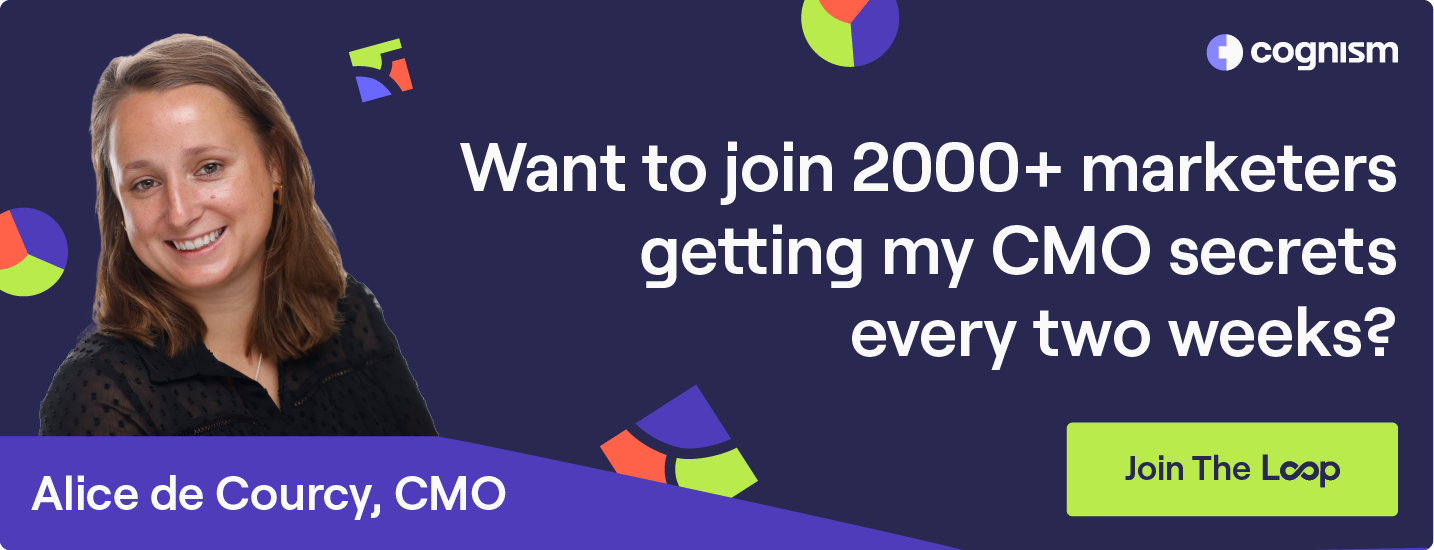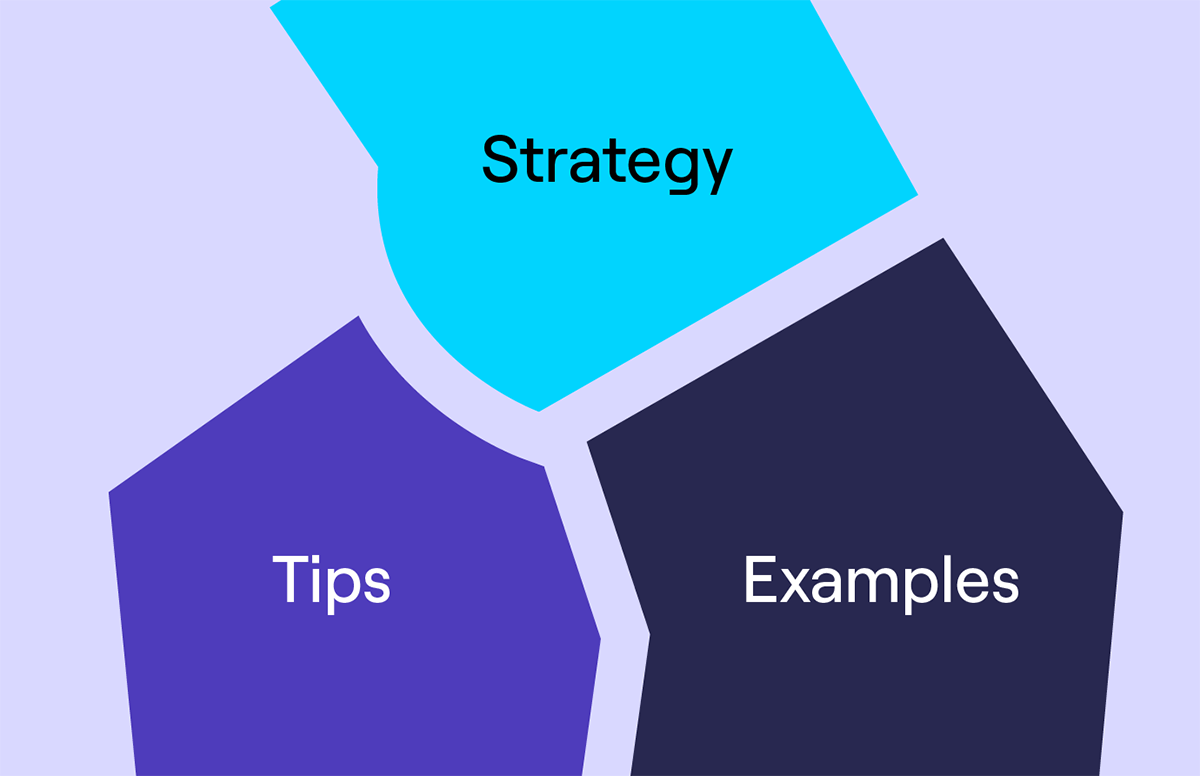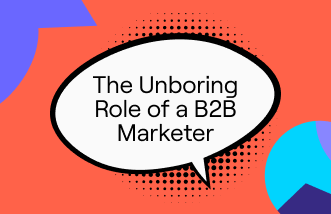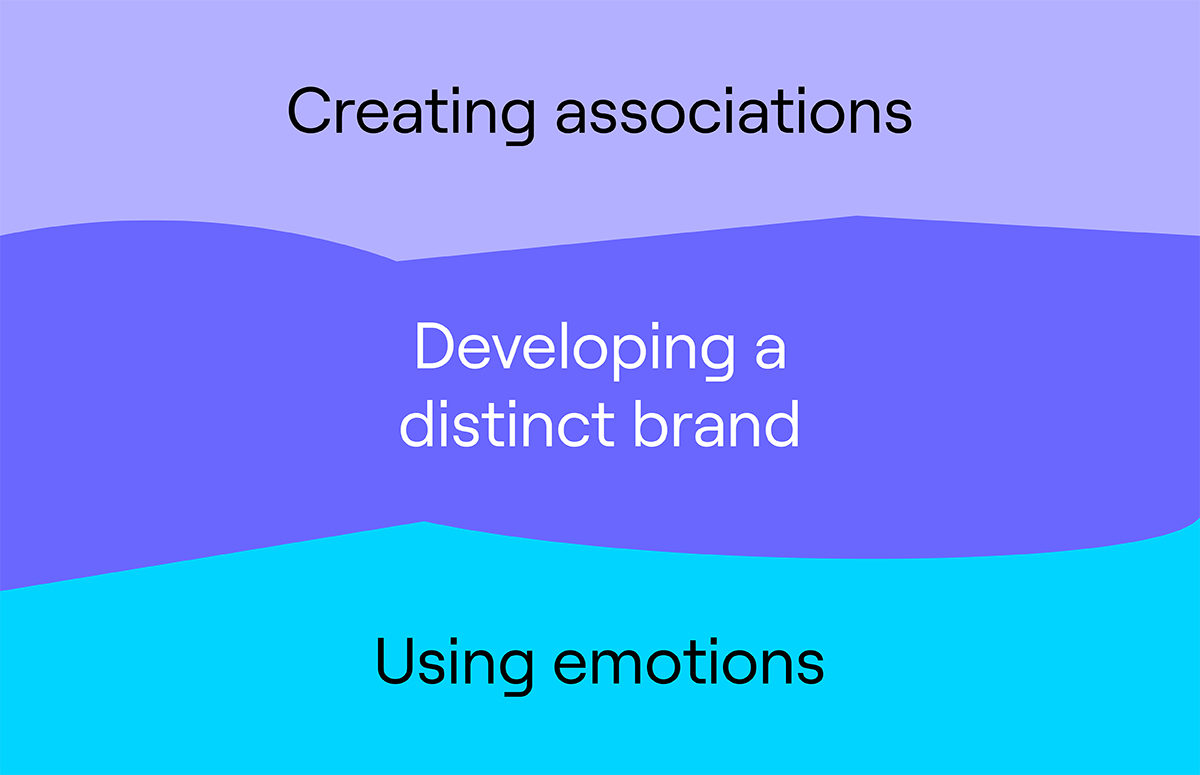Gated Vs Ungated Content: the Great Marketing Debate
It’s an age-old debate…
To gate or not to gate?
On the one hand, gating your content is a great strategy to get prospects’ direct dials and emails and establish intent.
On the other, ungating your content drives trust and builds brand awareness.
What to do?
That’s what a select group of top B2B marketers will establish in this article.
Scroll 👇 to hear both sides of the argument in the gated vs ungated content debate!
Gated content: all in favour
Gating content has been one of the favourite lead generation strategies among B2B marketers.
However, with marketing changing as a whole, so have our views on whether content should be gated or not.
Many organisations gate content because it’s a great way to convince buyers to enter their contact details into a form.
Why?
Because gated content allows us to segment our audiences by their interests, giving us more intent data to add to our marketing data pool.
You need to think of gated content like a transaction, as Rosanna Campbell, Freelance Content Marketer advises:
“You’re asking your leads to ‘pay’ for the content with their contact info. So you should always ask yourself before you gate - is this worth my leads’ information? Are they getting a return on their investment of trust and attention? And, as a quick rule of thumb - if in doubt, don’t gate!”
But how does it benefit us long-term?
Ben Soltana, Founder of DigiDux, says:
“Gated content is a great opportunity to connect with those who are in the middle of the funnel and interested in what we offer. I think of it as an invitation for potential customers to learn more about your business, services, offers etc., and it helps you build relationships because they know you have value to offer.”
This is why gating content of value is so important.
Your prospect will be disappointed if they had to take time out of their day to fill in a form only to get something in return that they got no value from.
Worse, they will lose trust in your brand.
And we all know that trust is vital for a successful B2B brand. Lauren Roitman, SEO Lead from Impression, adds:
“The success of gated content relies heavily on the trust that the brand with the content has built around itself. Gated content is essentially asking users to ‘pay’ for that content with their personal information.”
“Names, email addresses, phone numbers, how many people work at their company - they’re a form of currency online. If a user is unfamiliar with the quality of your content or doesn’t trust your brand, then they’re unlikely to hand over their details.”
“However, if you can show that your content is worth the payment - perhaps you’ve showcased your expertise through free resources, or you’ve invested a significant amount of time creating a genuinely useful resource. You can communicate this in the messaging and convince me of this. Then, I’d certainly consider paying with my details. Just make sure your buyer is getting what they need from the content.”
Adding to this, Ashley Young, Digital Marketing Manager at Array Behavioral Care, says:
“Gating or ungating content is a difficult decision that balances providing your audience with enough information and transparency to move forward in the buyer’s journey with wanting to collect the viewer’s information for lead nurturing.”
“In general, I suggest ungating content that explains your product and its benefits or contains sales information. I prefer to gate content that is valuable to the viewer – as in content that will solve a problem, teach a lesson, or pass on a skill.”
“If the content is educational and a viewer may share it with a colleague or peer – gate it.”
At Cognism, we’re all about offering our audience value, which is why when we predominantly gated content before changing over to a demand marketing strategy, we’d try and tailor it for our audience.
Liam Bartholomew, our VP of Marketing, says:
“Sometimes you see a great tagline, and you give your details for an eBook that consists of five points you already know. We don’t want our gated content to be like this, so we try to tailor our content for our audience.”
“For example, everyone wants to be able to talk to CEOs in B2B sales, so we offered a helpful cadence to allow our target audience to do that. We also include snippets in our adverts to show people exactly what kind of value they’re getting.”
Charlotte Chamberlain, Content Writer at Tao Digital Marketing, adds:
“There isn’t one set answer to whether content should be gated or ungated. There are times when it works remarkably and other times when it’ll repel people. Strip it back and keep it simple.”
“If your content is valuable, you have a clear understanding of your audience and can tailor content to that merged persona, go ahead and try gating it.”
“If you don’t have an effective buyer persona created, are offering search content that is clearly available elsewhere or don’t have a decent follow-up strategy, keep it ungated.”
But, at the end of the day, gating your content should be treated like any other B2B marketing strategy.
You need to establish an end goal that ties in with your buyer’s journey.
And, if it’s not a success, that’s okay. You can always repurpose it to help with your SEO, as Liam advises:
“Repurpose your content as SEO for maximum value. Then, it’s not a loss if no one completes your form for it.”
Ungated content: all in favour
There are a surprising number of marketers who believe that the golden age of gated content is over.
And here’s why:
Gated content doesn’t build customer loyalty.
You want to offer your buyers value.
Kim Herrington, Creative Director at Orsanna, says:
“When businesses view content as an asset that can drive traffic, leads and revenue, ungated content changes from a negative financial impact to a positive one.”
“Taking this perspective also shifts how you create your content. This perspective helps shift a brand from passive content creation to active content promotion, encouraging brand awareness and loyalty.”
By offering them these assets for free, you’re encouraging them to come back for more.
Plus, it allows as many people as possible to visit your site and read what you have to say, as Max van den Ingh, Founder of Unmuted, says:
“While gating content can definitely help you identify a certain level of intent from a specific individual, it also prevents your content from being read by as many people as possible. Especially in B2B, people are continuously on the lookout for new solutions to their problems.”
“But that doesn’t mean they are ready to buy right now. Your goal as a marketer should always be to help potential customers navigate your solution with as little friction as possible. Gating your content doesn’t serve this goal.”
And when you show this level of thought to your customers, it helps build a strong relationship with them. Consequently, they’ll be more likely to share and recommend your product or service even if they don’t convert themselves.
Danavir Sarria, Founder of SupplyDrop, adds:
“Gating your biggest trust-building assets, such as case studies, makes it harder to attract your best leads.”
“With that said, if you need to gate something, choose tools, such as process maps and calculators, because they're very useful but don't necessarily build trust.”
But it’s not just about creating awareness and encouraging shares.
Many marketers are no longer comfortable with requesting contact details from their buyers.
Tom Bangay, Director of Content and Community at Juro, says:
“I don’t think gated content is quite dead, but I think the bar at which you should feel comfortable asking for people’s details has been raised considerably.”
“If the offer is simply that you’re going to take your contacts’ details and push them through a B2B sales cadence, then I don’t think a vanilla whitepaper on contract lifecycle management is good enough.”
“But if you’re confident that by opting in to being contacted, your site visitor is actually going to get repeated, high-value content interactions that will make their job easier - then absolutely.”
What’s more, you need to consider GDPR laws because if you don’t, you could be left with a hefty fine.
Trina Moitra, Head of Marketing at Convert, says:
“We’ve moved away from gated resources. There is little sense in having someone download a PDF that signals an interest in learning more about an industry or a discipline and chase that ‘lead’ for trials and demos. They are not interested.”
“Straight up retargeting (to stay top of mind of TOFU leads) is moving into unchartered territory where privacy compliance is concerned.”
“Plus, knowing that an asset is not gated allows you to shift your focus from lead generation to engagement, inherently improving the quality of the content produced.”
But there are a lot more downsides to gating your content that just might not make it that worth it.
For instance, if someone wants your content badly enough but doesn’t want to give away their details for that information, they might fill in the wrong details on your form.
The fact is, most people who download gated content aren’t interested in your product or service. So why not create a valuable relationship with them by providing it for free instead?
Allie Decker, Head of Content at Omniscient Digital, offers the following advice:
“Most people will access gated content for a quick read or supplement their own content. There’s nothing wrong with this, especially when teams understand that gated content can be a strong backlink lever.”
“Should you choose to gate your content, my main warning is to take the data you get from gated content with a grain of salt and not to assume that every email you collect will be immediately ready to convert.”
“Gating content is a powerful way to measure interest and better understand intent - but the intent isn't always to convert. This is where most content teams go wrong.”
Find out how Cognism brings in leads with ungated content.
Gated vs ungated content: ending the debate
Overwhelmingly most B2B marketers don’t believe in choosing between gated or ungated content. According to Faizan Fahim, Content Marketer at Breeze.io, this relates to Pareto’s law:
“Ungated content cannot exist without gated content. By Pareto’s law, 20% of your audience is responsible for 80% of success.”
“So, by creating gated content for that 20%, you can fuel the ungated content for the rest of the audience. This way, you offer lots of people value for free, but you also implement a monetisation strategy.”
It’s a strategy that we’ve just implemented at Cognism. Alice de Courcy, our CMO, explains how our 80% ungated, 20% gated split has worked out for us:
“Our best content is more likely to compound over time to give us direct demo requests, with true intent to buy, if it is actually consumed. So we started shifting our focus and spend away from gated content and generating MQLs.”
“We haven’t stopped gating content altogether - it’s not going to be probable for us in our business model right now, but through this strategy, we’ve achieved record-breaking revenue months.”
The key is to find a balance between the two.
Why?
Because they both serve important roles in B2B marketing.
Emma Cimolini, Director of Marketing at Routific, says:
“The key is finding the right balance and choosing the right topics to use as gated content. Content targeting users higher in the marketing funnel should always be ungated in order to build brand awareness and trust in this initial stage of interest.”
“Gated content should only be for content geared towards users further along in their purchasing journey for content that is of higher value and actionable.”
And you can’t forget the user journey.
If your users have a good experience, they’re more likely to come back or recommend you to their friends and colleagues.
Kate Terry, Demand Marketing Manager at Turtl, suggests asking yourself the following questions when choosing whether or not to gate content at different stages of the buyer journey:
- At what point are they arriving at that content?
- How much do they know about you at that point?
- How much are they willing to share with you at that point?
You might find that most of your buyers will never fill out a form and they’ll be annoyed if you ask them to. She adds:
“What you can do to avoid annoying your customers is offer three chapters ungated and then gating the rest. This acts as a hook. Your prospect has already read part of the content, now it’s up to them to gauge if it's worth sharing their B2B data to download the rest.”
But, it all boils down to what you want to achieve as Richard Burns, Head of Strategy and Communications at CONTENTED.marketing, explains:
“Are you looking to convert new visitors to your website into leads? Do you want to find out additional information from existing MQLs, potentially converting them to sales qualified leads (SQL)?”
“Both use cases would benefit from some appealing gated content. However, if you're seeking to grow organically via SEO, social, even traditional PR outreach, then gated content is unlikely to be the right course of action.”
“Ultimately, it should be defined by your content strategy - what and how will you achieve a return from content marketing for your business? A mixed use-case is often the best course of action.”
“Ungated content drives visitors and leads to your website, building both trust and brand, while referring those visitors to your gated content where they can convert to MQL or SQL status.”
But it also comes down to where you are in your campaign.
Emma Williams, Digital Marketing Manager at Edge of the Web, says:
“It’s crucial to consider your goals and where you are in your campaign to answer whether gated content is right for you.”
“For example, are you just starting out in content marketing and simply trying to attract more organic traffic and boost your website’s engagement? Then keep your content ungated, so it’s easily accessible to new visitors and helps improve your brand’s reputation.”
At the end of the day, no matter which side you choose in the gated vs ungated content debate, it’s likely to be an ongoing process of experimentation and optimisation if you want the best success.
Jamie Irwin, Director & Founder of Straight Up Search, offers this final bit of advice:
“Businesses need user data to optimise their marketing efforts and increase revenue, so there is no correct answer whether you should gate or ungate your content.”
“The best solution is to test both to see what works best for your company. As long as you are not violating any copyright laws or compromising user privacy, the choice is up to you, right?”
Gated vs ungated content: the last word
As Liam Bartholomew says:
“There are loads of downsides to gating content, like losing your message or your prospects no longer wanting to engage with you. It’s a big ask of people, but I believe a tactic done well will still lead to results. There will always be positives and negatives to everything.”
So, all in all, whether or not you should gate your content comes down to three questions:
- First, what is your target industry?
- Second, what are your company goals?
- Finally, is your content worth gating?
Once you know this, experiment with what works for your business, and you’ll find the best strategy for your success.
Want to learn more about gated vs ungated content?
Listen to Alice de Courcy discuss the topic with Karla Rivershaw, former Head of Marketing at Turtl 👇



